Protecting & Restoring Long Island's Peconic Bays
Learn about the benefits of living/ natural shoreline here and check out our progress on the Suffolk County Marine Environmental Learning Center Living Shoreline project in Southold.
Faced with rising sea levels and the potential for stronger, more frequent storms as a result of global climate change, many property owners on the east end of Long Island have been installing bulkheads, sea walls, and other hard shoreline structures to protect their property. Unfortunately, these hard structures can have negative consequences for the environment and wildlife, and can worsen coastal erosion and flooding, putting local properties at risk.
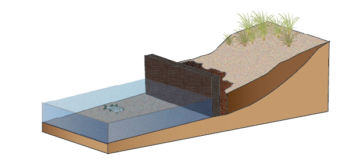
When hard shoreline structures are hit by waves, energy is reflected further down the shoreline disrupting natural sediment movement patterns and altering the shape of the coast. This process can alter the erosion and deposition patterns of sandy sediments, ultimately leading to shoreline destabilization. This destabilization can create problems for surrounding areas and may encourage nearby landowners to install hard structures along their property as well, further exacerbating the problem.
This “domino effect” of replacing natural shoreline with hard structures can result in the loss of important coastal habitats, including wetlands, beaches, and eelgrass beds. Habitat loss can negatively impact the fishing and tourism industries, as well as the wildlife that rely on these areas for feeding, reproduction, or nursery grounds.
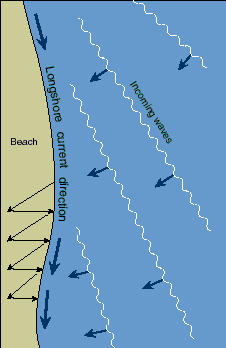
When waves hit the beach at an angle, sand is transported alongshore by wave energy. Waves also transport sand along the shore in a zig-zag pattern as they rush onto and off of the beach. This natural movement of sand is disrupted by hardened shorelines, which reflect wave energy and disrupt natural sand movement patterns, leading to erosion. Image taken from USGS.
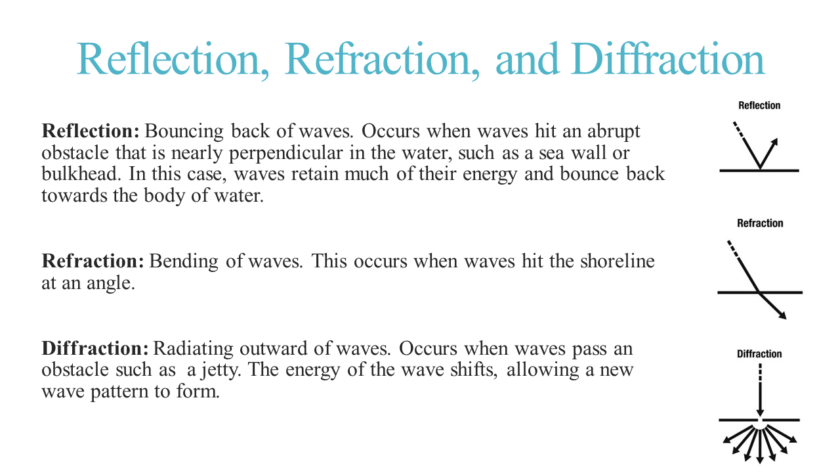
Hard shoreline structures also cause other problems—they can leach toxins, such as copper, chromium, and arsenic, into the surrounding water, further impacting the ecosystem. Additionally, these barriers prevent the natural migration of marshes inland as sea level rises, leading to their loss instead of allowing for their adaptation. Loss of marsh habitat negatively impacts wildlife and plant populations, and makes Long Island more vulnerable to coastal flooding, erosion, and storm damage.
With continued sea level rise and a potential increase in storm frequency and intensity due to a changing climate, there is a growing demand for shoreline protection on Long Island. The impacts of hardened shorelines are well established. Developing alternative forms of shoreline protection that do not negatively impact our shorelines, while also providing benefits to our coastal ecosystem, is a priority for PEP.
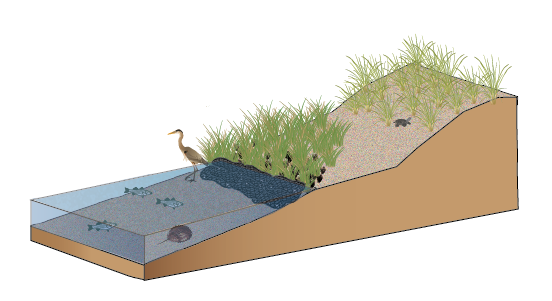
‘Living shorelines’ are a beneficial alternative to hardened shorelines. These ‘soft’ shorelines use native plants, shellfish, and other natural features such as rocks, sand, wood, coconut fiber, and shells to stabilize and protect coasts and decrease direct wave energy. Living shorelines are designed to mimic the natural environment and provide ecological benefits.
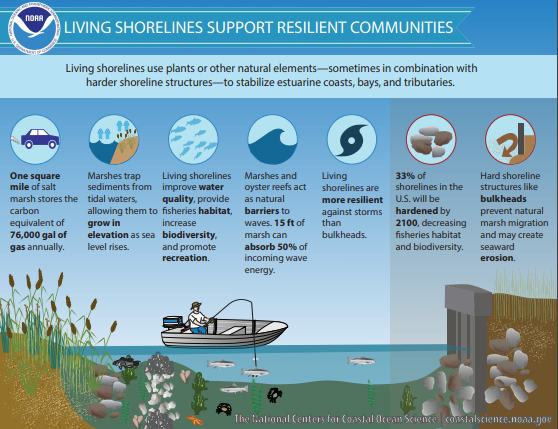
Faced with an increasing demand for shoreline protection among property owners, the Town of Southold wanted to provide its residents with an example of an environmentally-conscious alternative to shoreline hardening. For this reason, The Peconic Estuary Partnership has been hard at work in collaboration with the Town of Southold, Suffolk County, and Cornell Cooperative Extension (CCE), with funding from the USEPA, The Suffolk County Water Quality Protection and Restoration Program, and the Town of Southold, to create a living shoreline demonstration at The Suffolk County Marine Environmental Learning Center (SCMELC) in Southold, New York.
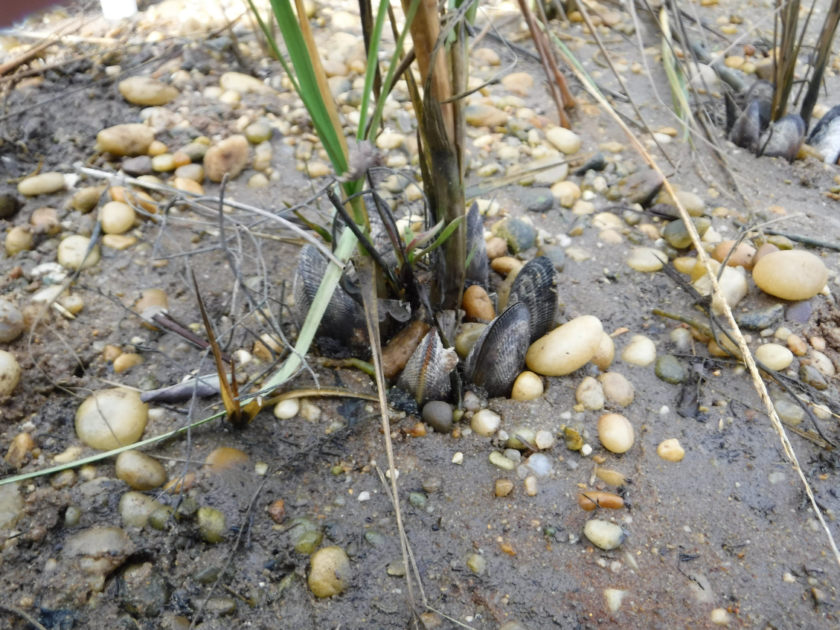
This living shoreline, installed along the banks of a creek at the SCMELC facility, incorporates several layers of shoreline stabilization as well as ribbed mussel (Geukensia demissa). A combination of cultured ribbed mussel and adult, transplanted ribbed mussel were used in the shoreline project. Transplanted ribbed mussel were collected from the existing population in this waterbody. Smooth cordgrass (Spartina alterniflora) seeds (from nearby marshes) were collected, propagated and raised in the CCE habitat restoration greenhouse prior to being planted.
This demonstration project also incorporates other natural structures to further stabilize the shoreline and provide a surface to which plant roots and mussels can attach. For example, bagged shell, rocks, coir logs, and wooden terracing are all included in the living shoreline project in order to test and demonstrate benefits, effectiveness, and appearances of each material in combination with the living features of the shoreline, Spartina grass and ribbed mussels.
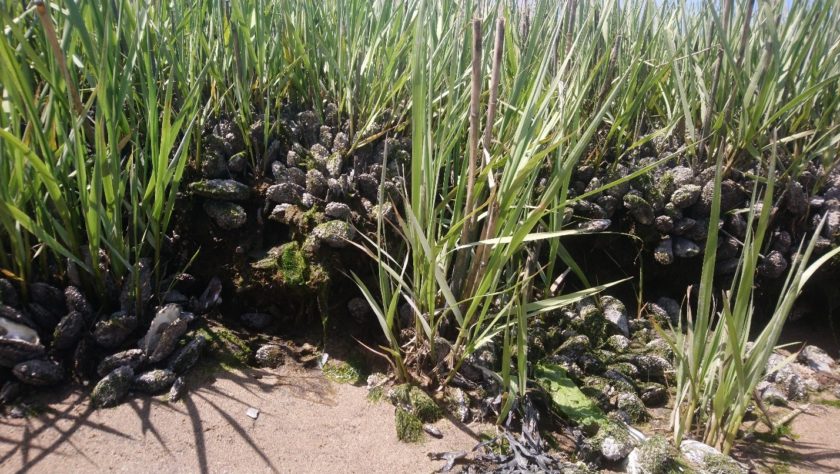

Sign up for News, Events and Information straight to your inbox.

Notifications